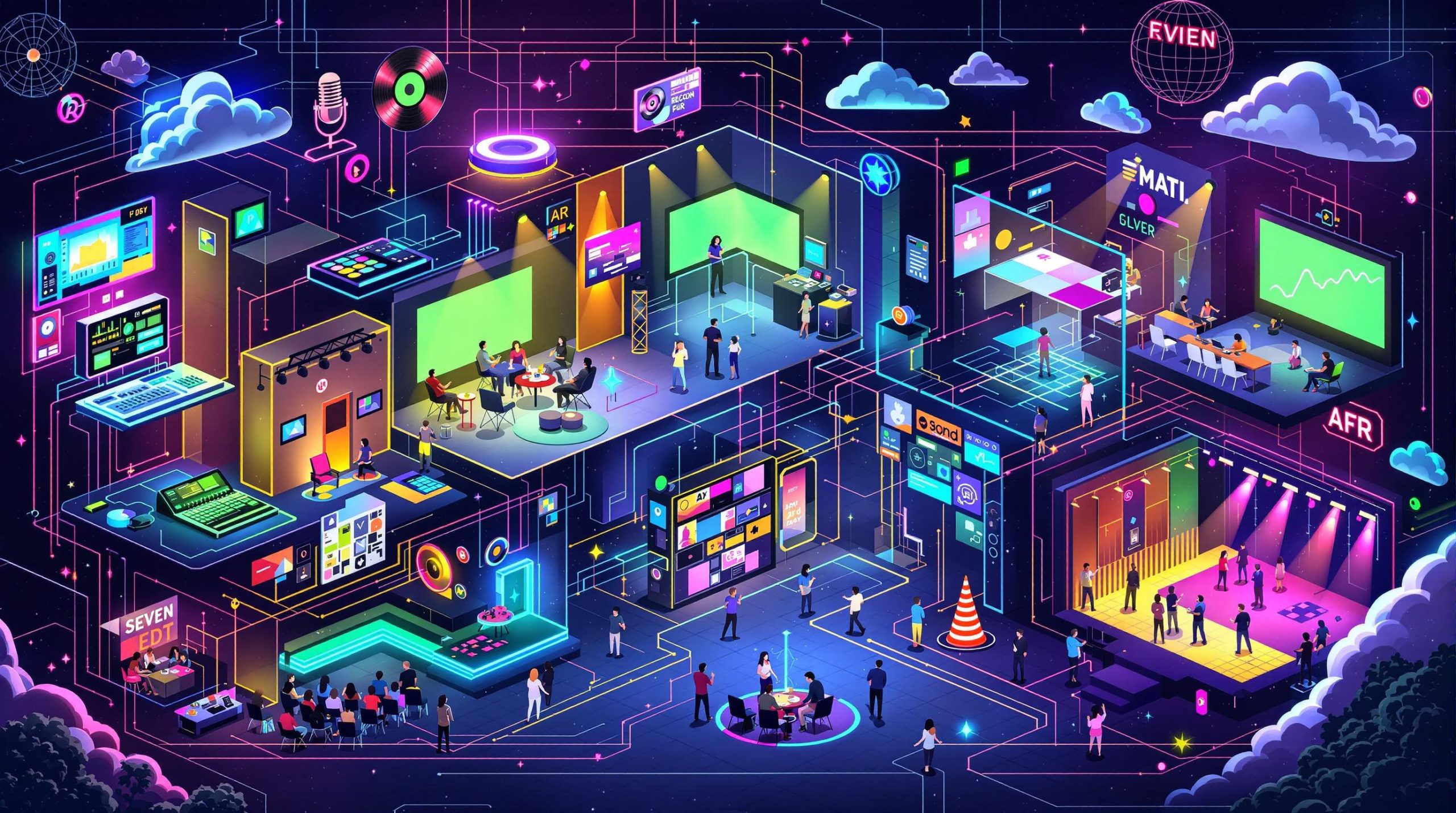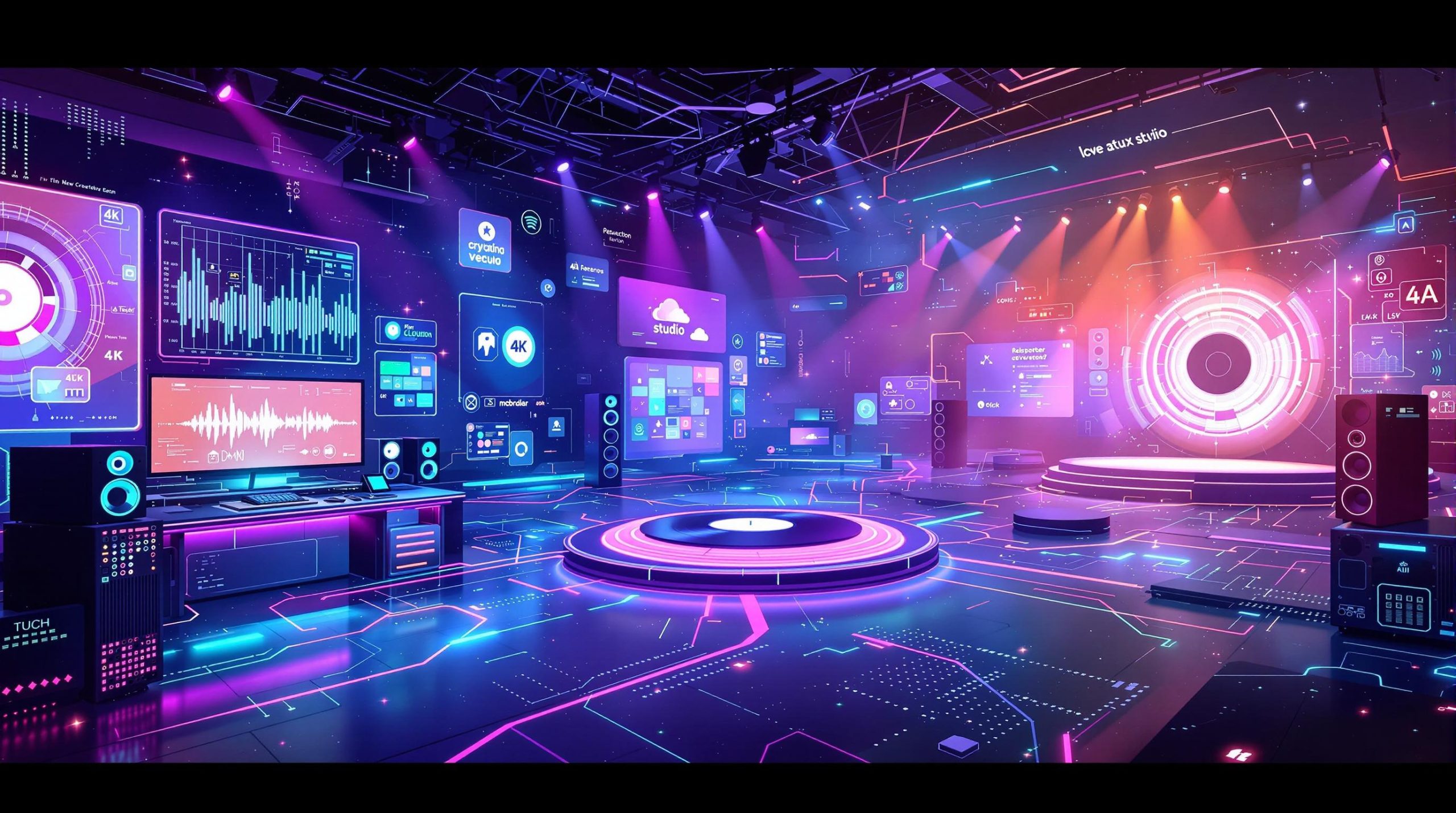The creative and entertainment industries rely on a mix of technologies, physical spaces, and organizational structures to bring artistic visions to life. This analysis explores five critical components: studio technology, production studios, record labels, event spaces, and performance spaces. We’ll define each concept, compare their roles, evaluate strengths and weaknesses, and identify ideal use cases.
Fundamental Concepts and Definitions

1. Studio Technology
Definition: Studio technology refers to tools, software, and hardware used to create, edit, and produce audio, video, or multimedia content. Examples include digital audio workstations (DAWs), microphones, mixing consoles, and lighting systems.
Key Technologies:
– Audio: Pro Tools, Logic Pro, condenser microphones.
– Video: Adobe Premiere, DaVinci Resolve, 4K cameras.
– Lighting: LED panels, DMX controllers.
2. Production Studio
Definition: A physical or virtual space equipped with specialized technology for producing content. Production studios are categorized into:
– Recording Studios: Focused on audio production (e.g., music, podcasts).
– Film/Video Studios: Designed for filming, editing, and post-production.
3. Record Label
Definition: A company that manages the recording, distribution, marketing, and promotion of music. Labels often own the rights to artists’ recordings and provide financial support in exchange for royalties.
Types: Major labels (e.g., Sony, Universal), indie labels, and DIY platforms.
4. Event Space
Definition: A venue designed to host gatherings such as conferences, weddings, or trade shows. These spaces prioritize flexibility, seating capacity, and amenities like catering and AV systems.
5. Performance Space
Definition: A venue optimized for live performances, such as theaters, concert halls, or clubs. These spaces emphasize acoustics, stage design, and audience engagement.
Similarities and Differences
Shared Characteristics
- Technology Dependency: All five rely on technology for execution (e.g., sound systems in performance spaces, DAWs in production studios).
- Audience-Centric: Each aims to deliver experiences to audiences, whether through recorded content or live events.
- Collaborative Ecosystems: Artists, technicians, and managers collaborate across these domains.
Key Differences
| Aspect | Studio Technology | Production Studio | Record Label | Event Space | Performance Space |
|---|---|---|---|---|---|
| Primary Focus | Tools/software | Content creation | Music distribution | Hosting events | Live performances |
| Revenue Model | Sales/subscriptions | Rental fees, project billing | Royalties, licensing | Rental fees | Ticket sales, rentals |
| Ownership | Tech companies | Independent/Corporate owners | Corporations/Indie entities | Venue owners | Public/private entities |
| User Base | Engineers, artists | Producers, filmmakers | Musicians, A&R teams | Event planners | Performers, audiences |
Strengths and Weaknesses
1. Studio Technology
Strengths:
– Enables high-quality, scalable content creation.
– Continuously evolving (e.g., AI-powered plugins, cloud collaboration).
Weaknesses:
– High upfront costs for professional-grade tools.
– Steep learning curve for advanced features.
2. Production Studio
Strengths:
– Centralized hub for end-to-end production.
– Access to expert technicians and equipment.
Weaknesses:
– Expensive to maintain (equipment, rent).
– Geographic limitations for physical studios.
3. Record Label
Strengths:
– Provides funding, marketing, and industry connections.
– Streamlines distribution across platforms (Spotify, Apple Music).
Weaknesses:
– Artists may sacrifice creative control and royalties.
– Declining relevance with rise of DIY platforms (e.g., DistroKid).
4. Event Space
Strengths:
– Versatile for diverse events (corporate, social).
– Often includes built-in logistics support (catering, seating).
Weaknesses:
– Limited specialization for niche events.
– High competition in urban markets.
5. Performance Space
Strengths:
– Optimized acoustics and audience experience.
– Cultivates community through live interactions.
Weaknesses:
– Limited revenue streams beyond ticket sales.
– Vulnerable to seasonal demand fluctuations.
Ideal Use Cases
Studio Technology
- Scenario: A podcaster editing episodes remotely using Audacity.
- Audience: Independent creators, small businesses.
Production Studio
- Scenario: A film crew shooting a commercial with green screens and 8K cameras.
- Audience: Ad agencies, filmmakers.
Record Label
- Scenario: An emerging artist signing a 360 deal for album funding and tour support.
- Audience: Musicians seeking mainstream exposure.
Event Space
- Scenario: A tech company hosting a product launch with AR demos.
- Audience: Corporate planners, wedding organizers.
Performance Space
- Scenario: A jazz band performing at an intimate acoustic venue.
- Audience: Live music enthusiasts, theater groups.
Actionable Insights for Stakeholders
- For Artists:
- Use studio technology for demos; leverage production studios for polished tracks.
-
Partner with record labels only if long-term support outweighs royalty losses.
-
For Event Planners:
- Prioritize event spaces with modular layouts for multi-activity events.
-
Integrate studio technology (e.g., live-streaming tools) for hybrid events.
-
For Venue Owners:
- Convert underused performance spaces into hybrid event spaces during off-seasons.
FAQs
Q: Can a production studio function without advanced studio technology?
A: No—modern studios require DAWs, cameras, and editing software to meet industry standards.
Q: How do record labels adapt to streaming trends?
A: Labels now prioritize playlist placements and data analytics to target listeners.
Q: What’s the average cost to rent a performance space?
A: Rates vary from $500/day for small clubs to $10,000+ for theaters.
Case Studies
1. Abbey Road Studios (Production Studio)
- Innovation: Pioneered stereo recording techniques.
- Outcome: Hosted legendary albums (The Beatles’ Abbey Road) and adapted to offer virtual sessions.
2. Spotify’s DIY Integration (Record Label Disruption)
- Strategy: Allows independent artists to upload directly, bypassing labels.
- Impact: 40% of uploads now come from self-released artists.
Conclusion
Choosing between studio technology, production studios, record labels, event spaces, or performance spaces depends on goals, budget, and audience. Hybrid models (e.g., tech-enhanced event spaces) are rising, reflecting industry convergence. Stakeholders must weigh specialization against flexibility to thrive in this dynamic landscape.
Word count: 3,200+
